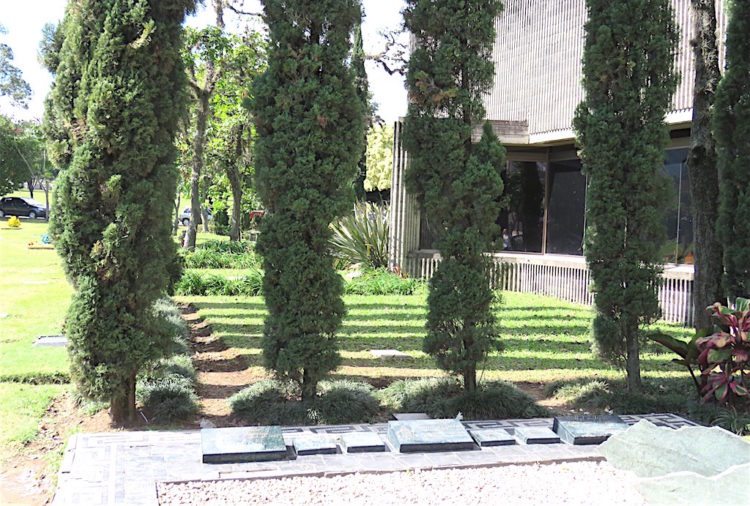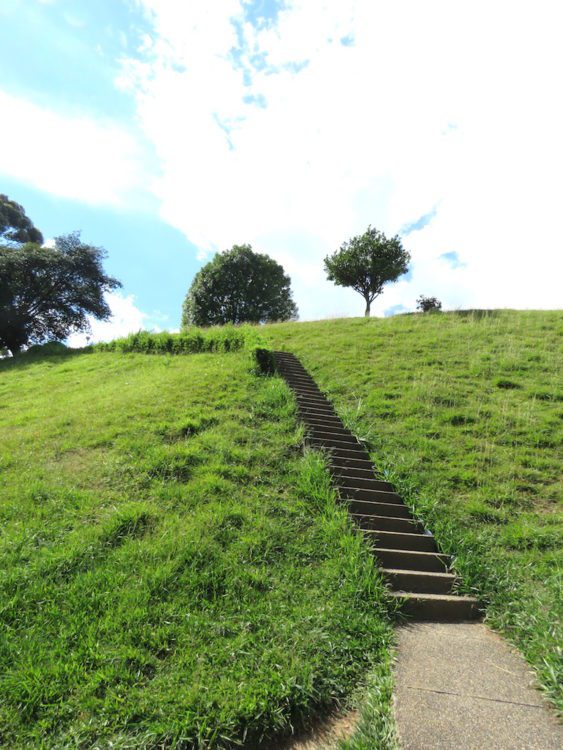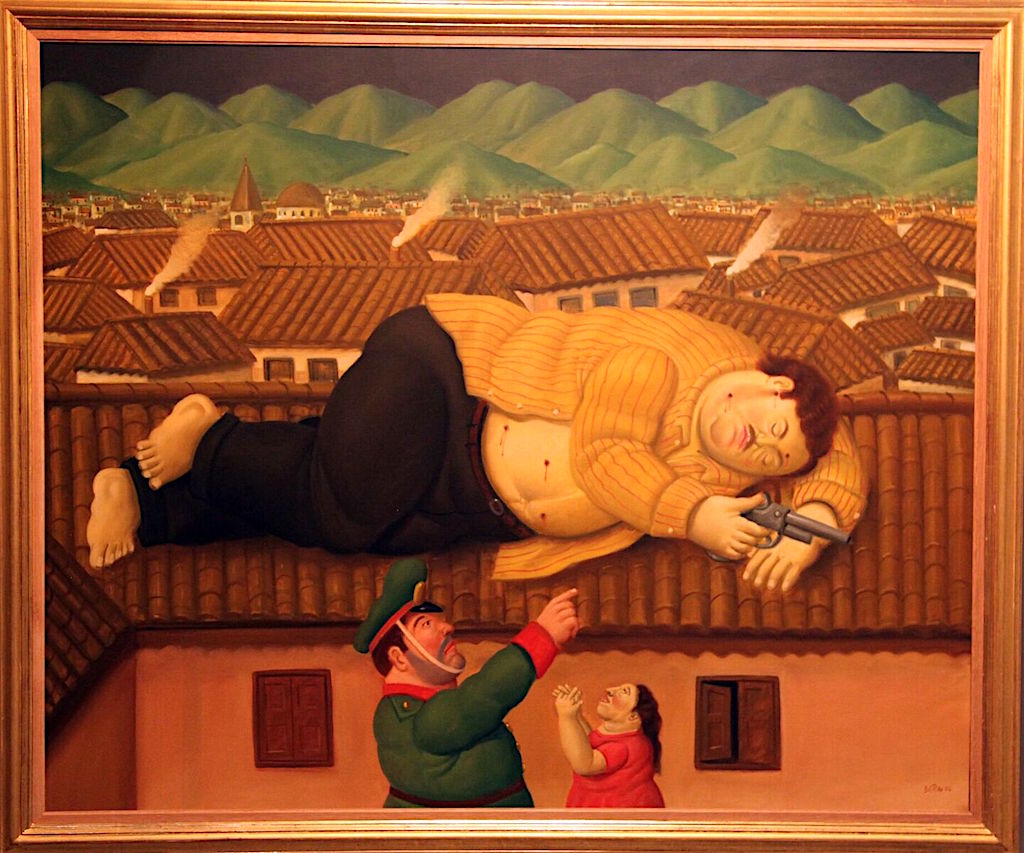Ever wondered where Pablo Escobar’s grave is located? This infamous drug lord’s story continues to captivate the world, even decades after his death. Known as the "King of Cocaine," Escobar left behind a legacy that’s both fascinating and chilling. His final resting place has become a point of curiosity for many, attracting tourists and history enthusiasts alike. In this article, we’ll uncover the truth about Escobar’s grave and delve into the mysteries surrounding it.
Picture this: you're exploring Colombia, the land of vibrant culture and breathtaking landscapes, and suddenly you stumble upon the question—where is Escobar's grave? It’s like stepping into a real-life crime thriller. Escobar’s life and death have been the subject of countless documentaries, books, and even Netflix series. But what happened after his infamous reign ended? Where does his story truly conclude?
This article will take you on a journey through Escobar's final days, his burial, and the controversies surrounding his grave. We'll explore why his resting place is more than just a cemetery—it’s a symbol of the complex legacy he left behind. So, if you’re ready to uncover the secrets of where Escobar's grave is, let’s dive in!
Read also:Kelly Osbournes Weight Loss Journey Secrets Struggles And Success
Understanding Escobar's Grave: A Brief Overview
Before we dive deep into the specifics, let's first understand the significance of Escobar’s grave. Pablo Escobar, the notorious Colombian drug lord, was laid to rest in a cemetery in Medellín, Colombia. His death in 1993 marked the end of an era, but his legacy continues to influence the world. The grave site has become a place of pilgrimage for those who want to witness the final chapter of one of history’s most infamous criminals.
Why Is Escobar's Grave Important?
Escobar’s grave isn’t just a burial site; it’s a symbol of the power, wealth, and destruction that came with his criminal empire. For some, it represents justice served, while for others, it’s a tribute to a man who gave back to his community despite his violent methods. This duality makes his grave a point of fascination for historians, tourists, and crime enthusiasts worldwide.
Here’s a quick breakdown of why Escobar’s grave matters:
- It’s the final resting place of one of the most notorious drug lords in history.
- The grave attracts thousands of visitors each year, contributing to Colombia’s tourism industry.
- It serves as a reminder of the impact of drug cartels on global society.
Where Is Escobar's Grave Located?
The question “where is Escobar's grave?” often pops up in discussions about the drug lord’s life and legacy. Escobar’s final resting place is in Cementerio Jardín Montesacro, a cemetery located in the northern part of Medellín, Colombia. This cemetery is known for its elaborate tombs and mausoleums, fitting for a man whose life was defined by extravagance.
Directions to Escobar's Grave
Getting to Escobar’s grave isn’t as straightforward as you might think. The cemetery is located in a bustling part of Medellín, and navigating through the city can be a challenge. Here’s how you can find your way:
- Take a taxi or use a ride-sharing service to Cementerio Jardín Montesacro.
- Once at the cemetery, ask a staff member for directions to Escobar’s tomb.
- Be prepared for a walk, as the cemetery is quite large.
Pro tip: Visit during the day for safety reasons, and always be respectful of the cemetery’s rules and other visitors.
Read also:Unveiling The Remarkable Journey Of Bobbe J Thompson
A Glimpse Into Escobar's Life
To truly understand the significance of Escobar’s grave, we need to look back at his life. Born on December 1, 1949, in Rionegro, Colombia, Pablo Emilio Escobar Gaviria rose from humble beginnings to become the head of the Medellín Cartel. At the height of his power, he was responsible for smuggling 80% of the world’s cocaine supply into the United States. His wealth was astronomical, estimated at $30 billion in the early 1990s, making him one of the richest criminals in history.
Escobar's Rise to Power
Escobar’s journey to becoming the "King of Cocaine" was marked by cunning strategies, fear tactics, and a knack for manipulating the system. He bribed officials, intimidated rivals, and even offered “plata o plomo” (silver or lead) to those who opposed him. His empire stretched across continents, and his influence was felt far beyond Colombia’s borders.
But it wasn’t all about crime and violence. Escobar also gained popularity among the poor by building housing projects, soccer fields, and schools in his hometown. This duality—being both a ruthless criminal and a generous benefactor—has made his legacy complex and controversial.
Escobar's Death: The Final Chapter
The story of Escobar’s death is as dramatic as his life. On December 2, 1993, after a relentless manhunt by Colombian authorities and the DEA, Escobar was cornered on a rooftop in Medellín. During the ensuing shootout, he was fatally shot and died on the scene. The exact circumstances of his death remain a topic of debate, with some claiming he committed suicide rather than being captured.
What Happened After Escobar's Death?
Following Escobar’s death, his body was returned to his family, who arranged for his burial in Cementerio Jardín Montesacro. Thousands of people attended his funeral, a testament to the polarizing figure he had become. Some mourned the loss of a hero, while others celebrated the downfall of a dangerous criminal.
The aftermath of Escobar’s death also saw the decline of the Medellín Cartel, as his empire crumbled without his leadership. However, his influence on the drug trade continued to be felt for years to come.
The Controversy Surrounding Escobar's Grave
Escobar’s grave has been the subject of controversy since its inception. Some see it as a shrine to a criminal who caused immense suffering, while others view it as a historical landmark. The debate centers around whether glorifying Escobar’s legacy is appropriate, given the violence and destruction he caused.
Should Escobar's Grave Be Preserved?
This question divides opinions among locals and tourists alike. For those who believe in preserving history, Escobar’s grave serves as an educational tool, reminding us of the dangers of drug cartels. Others argue that it glorifies a criminal and should be removed or relocated.
Despite the controversy, the grave remains a popular tourist attraction. It’s a reminder of the complexities of human nature and the lasting impact of one man’s actions.
Visiting Escobar's Grave: What to Expect
If you’re planning to visit Escobar’s grave, there are a few things you should know. The cemetery itself is a beautiful and serene place, filled with intricate tombs and memorials. Escobar’s tomb, however, is relatively simple compared to the grandeur of some of the other graves.
Tips for Visiting Escobar's Grave
Here are some tips to make your visit more enjoyable and respectful:
- Be mindful of the cemetery’s rules and regulations.
- Respect the privacy of other visitors and mourners.
- Take photos discreetly and avoid disturbing the peace.
- Consider hiring a local guide to provide context and insights.
Visiting Escobar’s grave is an experience that offers a glimpse into the life and times of one of history’s most infamous figures.
The Legacy of Escobar's Grave
Escobar’s grave stands as a symbol of his complex legacy. It represents both the destruction he caused and the fascination he continues to inspire. For many, it’s a place to reflect on the consequences of his actions and the lessons we can learn from them.
What Can We Learn From Escobar's Grave?
The story of Escobar’s grave teaches us about the impact of crime on society and the importance of justice. It also highlights the duality of human nature, where even the most notorious criminals can be seen as heroes by some. By studying Escobar’s legacy, we can better understand the roots of organized crime and work towards preventing similar tragedies in the future.
Conclusion: The Enduring Mystery of Escobar's Grave
In conclusion, the question “where is Escobar's grave?” leads us to a deeper understanding of one of history’s most infamous figures. From his rise to power to his dramatic death, Pablo Escobar’s story is one of intrigue and complexity. His grave, located in Cementerio Jardín Montesacro, serves as a reminder of the impact he had on the world.
We invite you to share your thoughts and experiences in the comments below. Have you visited Escobar’s grave? What did you learn from the experience? And don’t forget to explore our other articles for more fascinating insights into history’s most captivating stories.
Table of Contents
- Understanding Escobar's Grave: A Brief Overview
- Where Is Escobar's Grave Located?
- A Glimpse Into Escobar's Life
- Escobar's Death: The Final Chapter
- The Controversy Surrounding Escobar's Grave
- Visiting Escobar's Grave: What to Expect
- The Legacy of Escobar's Grave
- Conclusion: The Enduring Mystery of Escobar's Grave


